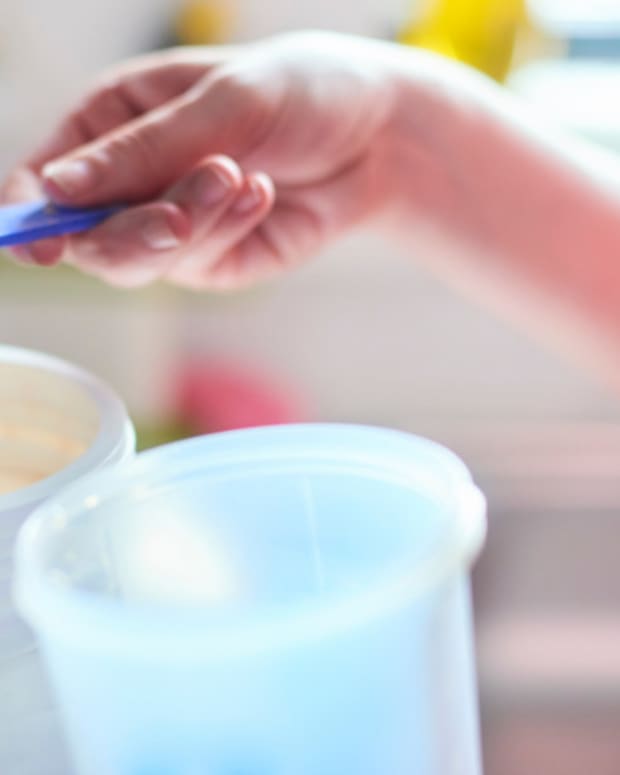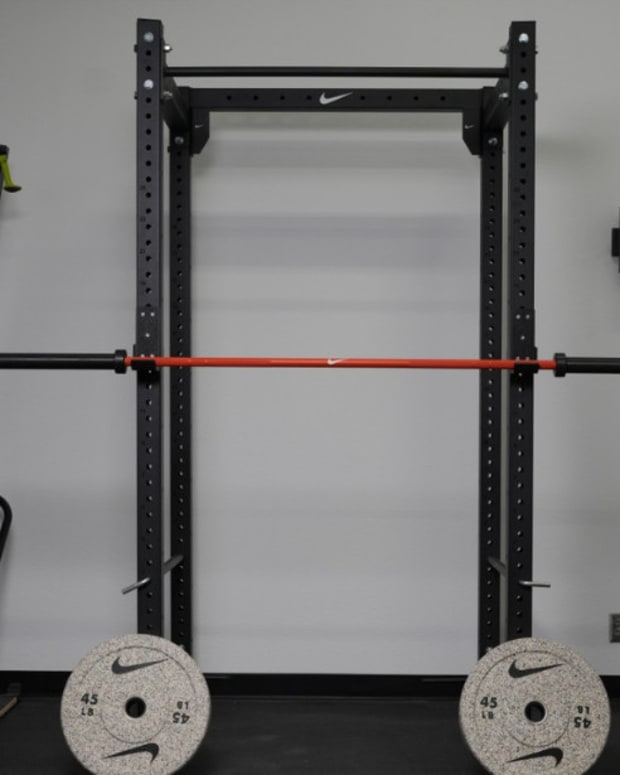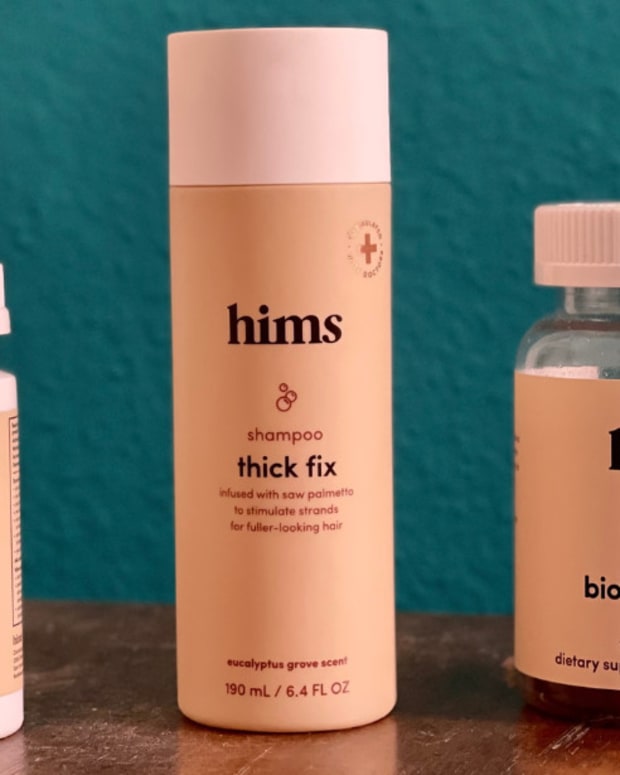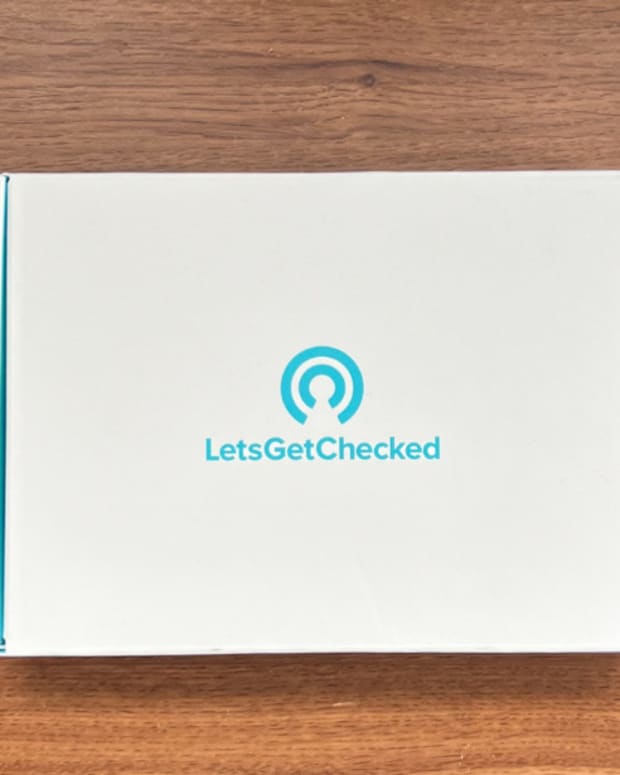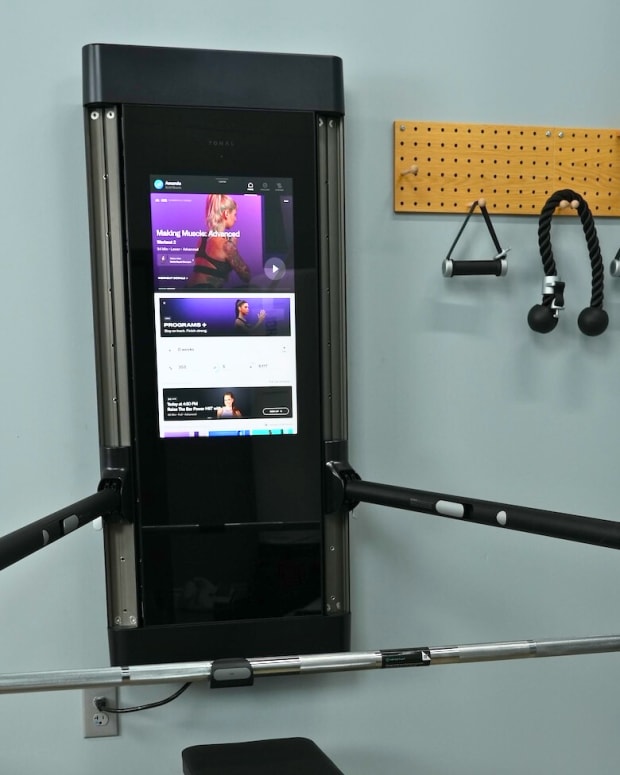The products featured in this article have been independently reviewed. When you buy something through the retail links on this page, we may earn commission at no cost to you, the reader. Sports Illustrated editorial staff are not involved in the creation of this content. Learn more here.
It can be difficult to meet daily protein requirements for muscle hypertrophy, but smoothies and protein shakes can be an easy source of protein in your food arsenal to get those good muscle-building macros in. And with the best blender, you can turn that source of protein into a meal, rather than just a watery shake.
A blender can especially be key with certain types of protein powder, like plant-based powders, and green smoothies with lots of fibrous veggies—those tend to be more fickle about mixing compared to whey protein powders, which get consistent more easily. Plus, with high powered blenders that can crush ice, you can add texture and mass without adding calories.
In this article, we'll break down the strengths and features of six top blenders from Amazon to help you find the appliance that fits your needs and budget. Read on to explore our picks:
Our Picks for Best Blender:
- Best Blender Overall: Vitamix 5200
- Best Blender For Smoothies: Cleanblend Commercial Blender
- Best Portable Blender: Nutribullet Personal Blender
- Best Personal Blender: Ninja Foodi
- Best Blender For Protein Shakes: KitchenAid 5-Speed Diamond Blender
- Best Blender Food Processor Combo: Cuisinart Smart Power Duet
Best Blender Overall: Vitamix 5200
Key Features:
- Capacity: 64 ounces
- Materials: Stainless steel and plastic
- Price: $397
Avid fans of Gordon Ramsey’s Hell’s Kitchen TV series might recognize the Vitamix blender brand, which has appeared on the show as a special prize, often to the squealing delight of the winning cooks. But why such excitement for a blender? Well, Vitamix isn’t just any plain old blender—it’s more like the Ferrari of blenders. The Vitamix 5200 has a motor befitting a busy commercial kitchen, powerful enough to blend anything to a smooth, creamy consistency. With a blender of this caliber, you can say goodbye forever to wasting time trying to mix lumpy protein shakes in a shaker bottle. Plus, the blender is incredibly versatile. After all, there’s a reason top chefs covet the Vitamix, which can make soups, smoothie bowls, nut butters and other pastes.
Here are some more specs on the impressive blender: The 5200 has a robust range of speeds (10 total) that can be adjusted mid-blend, and a 64-ounce capacity to handle large batches. That might be more space than you need if you’re just using the blender to make personal shakes, however, I’m a big fan of freezing smoothie “cubes” in silicone ice cube trays. Later you can toss the cubes in, add a little liquid, some protein powder and voila. One Amazon reviewer said once you use the 5200, you’ll “never go back,” citing its top-tier ability to mix smoothies and protein shakes. “No other blender grinds the ice and berries so perfectly. There's just no comparison. Vitamix makes perfectly smooth drinks in less than a minute,” the reviewer continues. “I've had one in my other house for eight years and haven't had a single problem. It ends up being cheaper than replacing the cheap ones when the motor blows out.”
What we like:
- Commercial-grade bender used by top chefs and restaurants
- One of the most powerful motors for seamless blending
- Variable speed control with 10 settings
- Black, red and white colors options available
- 10-year warranty if you register the blender
What to consider:
- High-end blender with a luxury price tag
- Because of the high speeds, some find that the Vitamix overly melts cold treats
Best Blender For Smoothies: Cleanblend Commercial Blender
Key Features:
- Capacity: 64 ounces
- Materials: Stainless steel and plastic
- Price: $168.97
Silky smooth smoothies have entered the chat. Cleanblend is all about promoting a healthy lifestyle (although if you use yours to make margaritas as a treat, more power to you). The brand’s commercial blender uses food-grade stainless steel and BPA-free plastic to create a powerful blending experience comparable to that of Vitamix, but at a more affordable price. Indeed, neither Cleanblend nor any brand can truly escape the long shadow cast by Vitamix models, but if you’re on a tighter budget, Cleanblend is one of our top picks.
One reviewer said that when looking for a model “comparable to Vitamix,” the name Cleanblend came up often. And after purchasing, it “didn’t disappoint,” noting the machine has blended soups, shakes and nuts to a smooth consistency. Another reviewer said that Cleanblend “works like a charm,” adding, “My homemade smoothies are now exactly like the ones I usually pay $8 for.” Other reviewers noted that the blender can tackle smoothie add-ons with more fickle textures too, like nuts and oats, which is ideal if you’re trying to make meal replacement shakes or smoothies for bulking up. One reviewer offered straightforward praise: “This blender by far is the best one I have ever owned. My smoothies are actually smooth now.”
What we like:
- Powerful motor with variable speed control
- Five-year warranty included
- Comes with a tamper
What to consider:
- One reviewer said blender doesn’t pulverize berry seeds
- No dishwasher safe components
Best Portable Blender: NutriBullet Personal Blender
Key Features:
- Capacity: 24 ounces
- Materials: Stainless steel and plastic
- Price: $57.28
NutriBullet (not to be confused with the “Magic Bullet,” an infomercial blender mainstay) calls its personal blender the “first step towards healthy eating.” I’d say that’s a claim worth considering given that one of the trickiest parts of healthier eating is eating well when you don’t have access to your own kitchen. “When we were evacuated, I was missing my morning protein shakes,” writes one reviewer. “Now I can take this with me when we travel because [it’s] portable and easy to carry.” Even if you don’t require the portability, the blender is great for small kitchens, since it won’t usurp too much countertop real estate.
Another reviewer said they keep theirs at work—an excellent idea to resist the temptation of fast snacks at the vending machine–and use it to whip up a healthy, blended treat. “Chops frozen fruit and ice into a nice smooth consistency,” the reviewer adds. Despite the fact that the blender is small enough to tote around with you, reviewers said the capacity was enough for two smoothies. The NutriBullet comes with a lip ring, so that the blender body can instantly turn into a to-go cup for your blended drink.
What we like:
- Comes with a lip ring and resealable lid
- Recipe book included
- Great for anywhere access to smoothies
What to consider:
- The to-go cup may be too big for most car cup holders
- Can only blend at one speed
Best Personal Blender: Ninja Foodi
Key Features:
- Capacity: 24 ounces
- Materials: Stainless steel and plastic
- Price: $89.99
The six-speed Ninja Foodi is another excellent blender to make grab-and-go smoothies for your personal enjoyment. The body of the blender itself is slightly bulkier than that of the lighter, more portable NutriBullet (6.5 versus 5.5 pounds), but comes with equally nimble accessories for making to-go drinks. The blender’s blade, cups, bowl and lids are all dishwasher safe, which is a nice convenience for blender vessels, as anyone who’s tried to handwash congealed smoothie off a blender will know.
One reviewer, who said they were “too lazy” to ever write Amazon reviews, called the blender “a lazy person’s dream…Amazing blending power, EASY cleanup,” the review continued. “I am so grateful for this blender so smoothies can be an easy part of my day without resorting to ordering an expensive one on DoorDash.” Customers will likely find that homemade smoothies clock in with better macros, too. Another review calling the Ninja “the best personal size blender” said the blender crushed ice better than other models previously purchased.
What we like:
- Budget friendly
- Six different blend settings
- Portable and easy to store
What to consider:
- Smoothie bowl might be an extraneous feature
Best Blender For Protein Shakes: KitchenAid 5-Speed Diamond Blender
Key Features:
- Capacity: 60 ounces
- Materials: Zinc, stainless steel and plastic
- Price: $129.99
To have the best possible protein shake experience, you need a delicious tasting protein powder and a blender that’s up to the task of crushing ice or frozen fruit. This KitchenAid blender (named “Diamond” per the shape and not the materials) is definitely up to the task. Wrote one reviewer, “This machine crushes ice beautifully! I use it daily for my protein shake and it works like a dream.” That sentiment was echoed in other reviews: “I have only used it once and it worked awesome! I bought it to make protein shakes that call for ice. I knew I needed a powerful blender to pulverize ice cubes. Worked perfect!”
One reviewer said the blender seemingly had a mind of its own, blending protein shakes seamlessly without having to stand and monitor. Instead, the KitchenAid, with its five speed settings and Intelli-Speed Motor Control, senses the contents and adjusts to optimal speeds on its own as needed.
What we like:
- Powerful motor
- Intelligent speed control
- Five-year limited warranty included
What to consider:
- Many color options were out of stock
- One of the pricier picks
Best Blender Food Processor Combo: Cuisinart Smart Power Duet
Key Features:
- Capacity: 24 ounces
- Materials: Stainless steel and plastic
- Price: $72.99
It’s a common conundrum, especially for a small kitchen with limited counter space and storage: Buy a food processor, or buy a blender? What if you seemingly need both for your favorite (or aspirational) recipes? Fortunately, brands have answered this quandary with combo blender and food processors like the Cuisinart Smart Power Duet. The versatile appliance combines the functionality of a blender and a food processor. The device itself is also compact, with a low enough profile that overhead cabinet clearance shouldn’t be an issue in most kitchens.
Many reviewers praised the device’s durability and longevity, citing that they had purchased a replacement after as long as a quarter century of use. Wrote one reviewer, “If this replacement lasts half as long, I'll be happy. I use [the blender] to whip up smoothies and it does a great job of getting through frozen berries. I also use [the food processor attachment] frequently to make hummus.” Anyone looking to start cooking more and eating healthier should consider investing in one of these devices.
One quibble is that the blender only comes in chrome, which can be a nuisance if you’re trying to match the device to other kitchen appliances on your countertop. However, given the blender/food processor’s attractive price-point ($72.99 at publishing), it was a mostly moot complaint.
What we like:
- One of the best budget blenders
- Easy pre-set buttons for functions like crushing ice, making purees, etc.
What to consider:
- Less powerful motor than more commercial-ready alternatives
How to Choose the Best Blender for Your Nutritional Needs
Choosing the best blender doesn’t have to be a stressful experience, but it should be thoughtful to an extent. The biggest considerations: How do you plan to use the blender? How many people are you serving with the blender? Does the blender need to be a certain size and style for the countertop? With all that in mind, the type of blender will play a big role.
Types of Blenders
Just like you need to understand bed types to choose the best mattress for your sleep position, you need to understand blender types so that you can choose the best one for your nutritional advantage.
Personal
Personal blenders are designed for individual use and come with single-serve blending cups. They're excellent for prepping and blending smoothies and protein shakes directly into the container that you'll grab on your way to the gym. Typically, a personal blender is less powerful and not suited for a commercial kitchen. They are, however, easy to clean and save you the inconvenience of moving ingredients from bowl to bowl.
High-Performance
These blenders are more powerful—what you’d see in the backs of restaurants and culinary schools—and are ideal for handling hardier ingredients like nuts, ice and tough veggies, like carrots. Generally, a high-performance blender will have a higher wattage motor, durable blades and variable speed controls, making them ideal for blending peanut butter, crushing ice and preparing silky-smooth, protein-laden smoothies.
Portable
These are compact and designed to leave the house for on-the-go use. They sometimes come with rechargeable batteries, and are the ideal size for making single-serving smoothies or shakes. They're great for road warriors, gym-goers or anyone who wants a quick and convenient blending solution.
Standard
Standard blenders offer a solid balance of power and versatility. They're suitable for general blending tasks, such as making smoothies, pureeing soup and preparing sauces. If you need a fantastic all-in-one option, check if the blender can double as a food processor.
Our Methodology: How We Chose the Best Blenders
Capacity
Consider how much you'll typically need to blend at once. Personal blenders come with smaller cups ideal for single servings, while standard and high-performance blenders offer larger pitchers for bigger batches.
Wattage
Look for blenders with higher wattage motors, as they tend to perform better when blending tough ingredients. High-performance blenders usually have more power, but even standard blenders can be efficient for everyday tasks.
Function
If you're looking for versatility, a blender that doubles as a food processor, like the Cuisinart Smart Power Duet, can be a great option. It allows you to perform multiple tasks with a single appliance. Some blenders can also double as juicers, although that’s more rare.
Ease of Use
Blenders with removable and dishwasher-safe parts are easier to clean and maintain, saving you time and effort. The faster and more powerful blenders also tend to be easier to use, since you won’t be stuck waiting lengthy periods of time or using a tamper to push down food repeatedly for the blending to complete.
Blender FAQs
How often should you clean your blender?
It’s not what any busy gym-goer loves to hear, but ideally you should clean your blender after each use. We recommend cleaning it shortly after you finish using it, to prevent any food from becoming stubbornly stuck to the surface. One trick I love to use: Throw warm water and a few dollops of dishwasher detergent into the blender vessel, then get it spinning. For a more thorough cleaning, take apart the blender and wash each component, including the lid and blades.
What is the difference between a blender and a food processor?
The best food processors can chop, slice, grate and mix solid food items, generally to then be incorporated into a salad or recipe for cooking. Blenders, on the other hand, liquify food items, and are best to create creamy textures befitting the best milkshakes, ice cream, smoothies and sauces. Some appliances are able to do both functions, but be sure you change the blade (if needed) to get the best outcome.
Can you leave a blender unattended?
Leaving a working blender unattended is generally not recommended. Beyond the potential hazards of leaving any kitchen appliance powered by electricity unattended, you also may get an inconsistent result with the consistency of your protein shakes when blending unmonitored. Your countertop blender might also cause a big countertop mess when left to its own devices.
Is a glass or plastic blender better?
Glass versus plastic blender is a matter of personal preference. If you don’t mind the extra weight, a glass blender can be the better choice for durability and appearance. Plastic blenders, on the other hand, are more lightweight and tend to be more budget-friendly. When it came time to retire my retro glass Oster blender, I went with plastic, which is the direction many top brands have gone in new models.
Should I buy a blender on Prime Day?
Prime Day is one of the many good shopping holidays to get a blender, especially since Amazon offers all the top models. Just note when buying on Amazon you may have to take extra steps with the manufacturer to get warranty coverage, compared to buying directly from the brand.
What is the “pulse” setting on blenders?
The pulse setting kicks the blender in the highest gear at your command so you can quickly start and stop the blade to process foods, but only while you’re pressing the button for greater control.
Final Thoughts on the Best Blenders
As a former bartender, I can mix protein powder in a shaker bottle better than most (it takes serious elbow grease after all to get the foam to rise in a Ramos Gin Fizz). And still, even the best protein powders sometimes stubbornly refuse to seamlessly integrate with liquids after vigorous jostling. This scenario is where a blender can save your arm and tastebuds. Plus, beyond whipping up a delicious meal replacement shake, the best blenders can be a vital tool in the creation of five-course meals themselves, with their capacity to make soups, salsas, sauces and purées.
And the neat part? Many of the high-quality blenders worthy of a top chef’s kitchen or athlete’s pantry can conveniently be found on Amazon. The site’s extensive selection ensures beginners and gourmands alike can find an appliance that will suit their needs, so you can focus on getting protein for your muscle gains rather than scouring the kitchen section of a home goods store.
Do be sure to always consult a care provider, such as a nutritionist or medical doctor, before incorporating big dietary changes by introducing a blender, especially if you’re using powders that affect gut health, like probiotics.
These statements have not been evaluated by the Food and Drug Administration. This product is not intended to diagnose, treat, cure, or prevent any diseases.
Prices are accurate and items in stock as of publish time.








